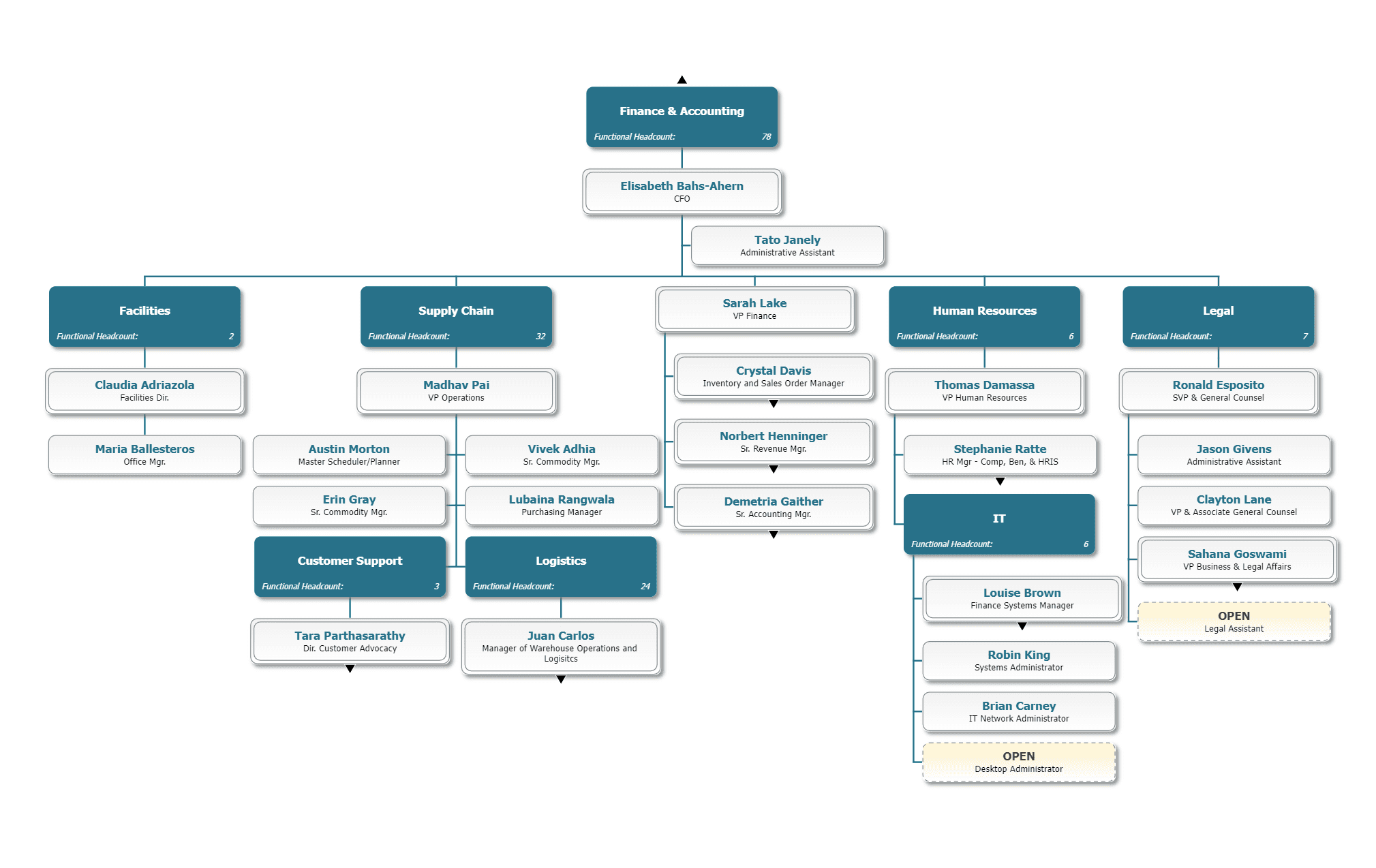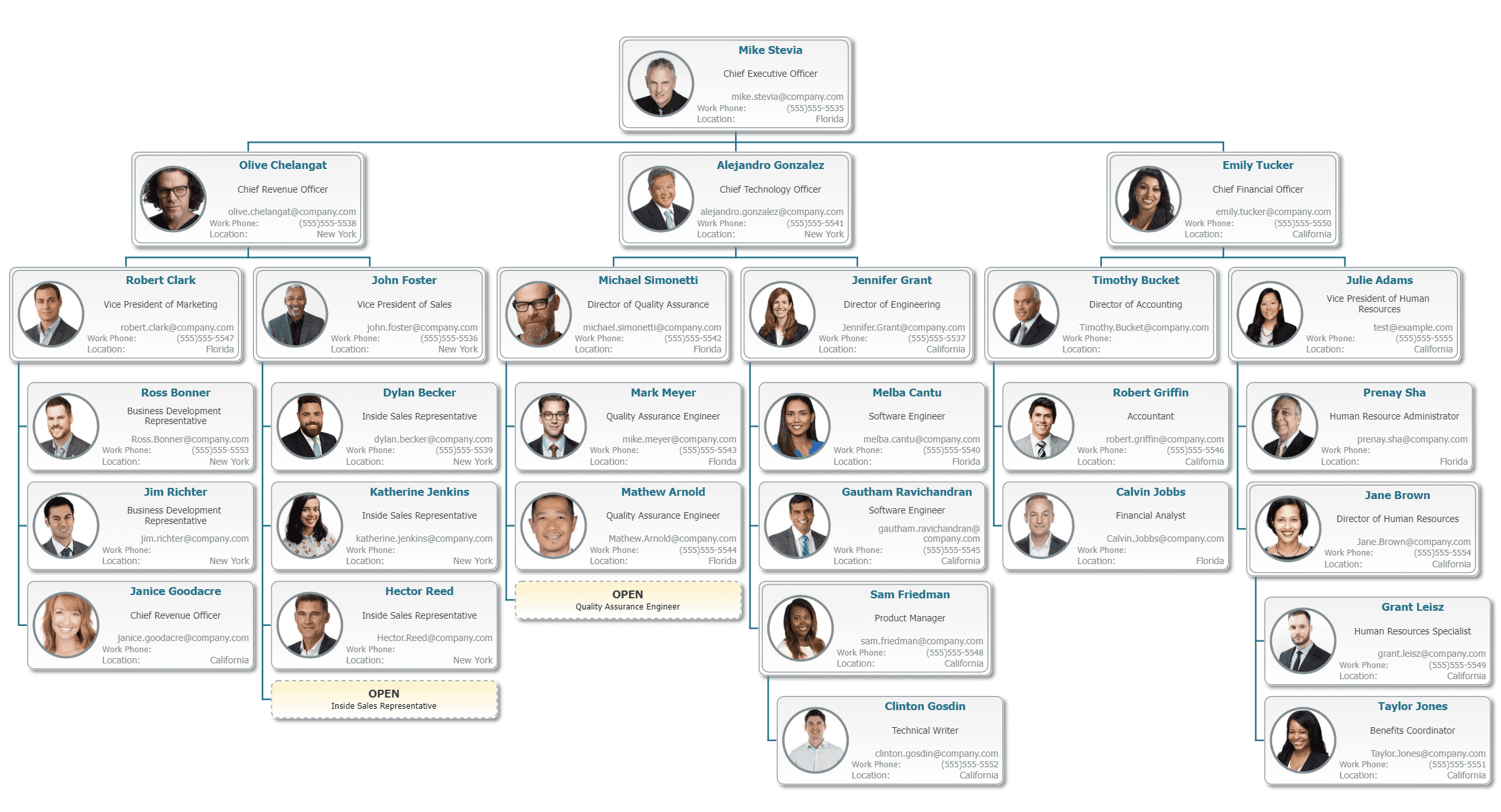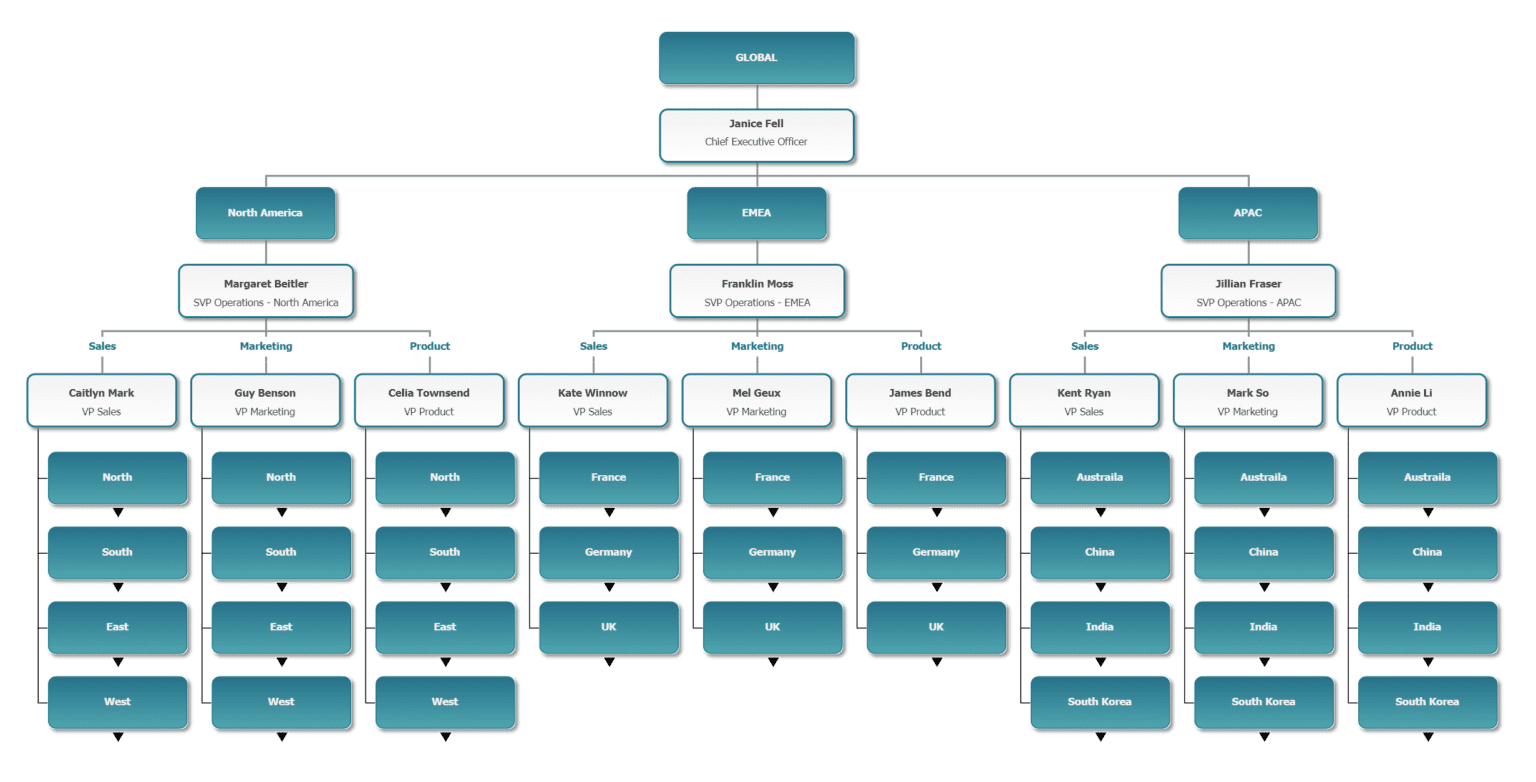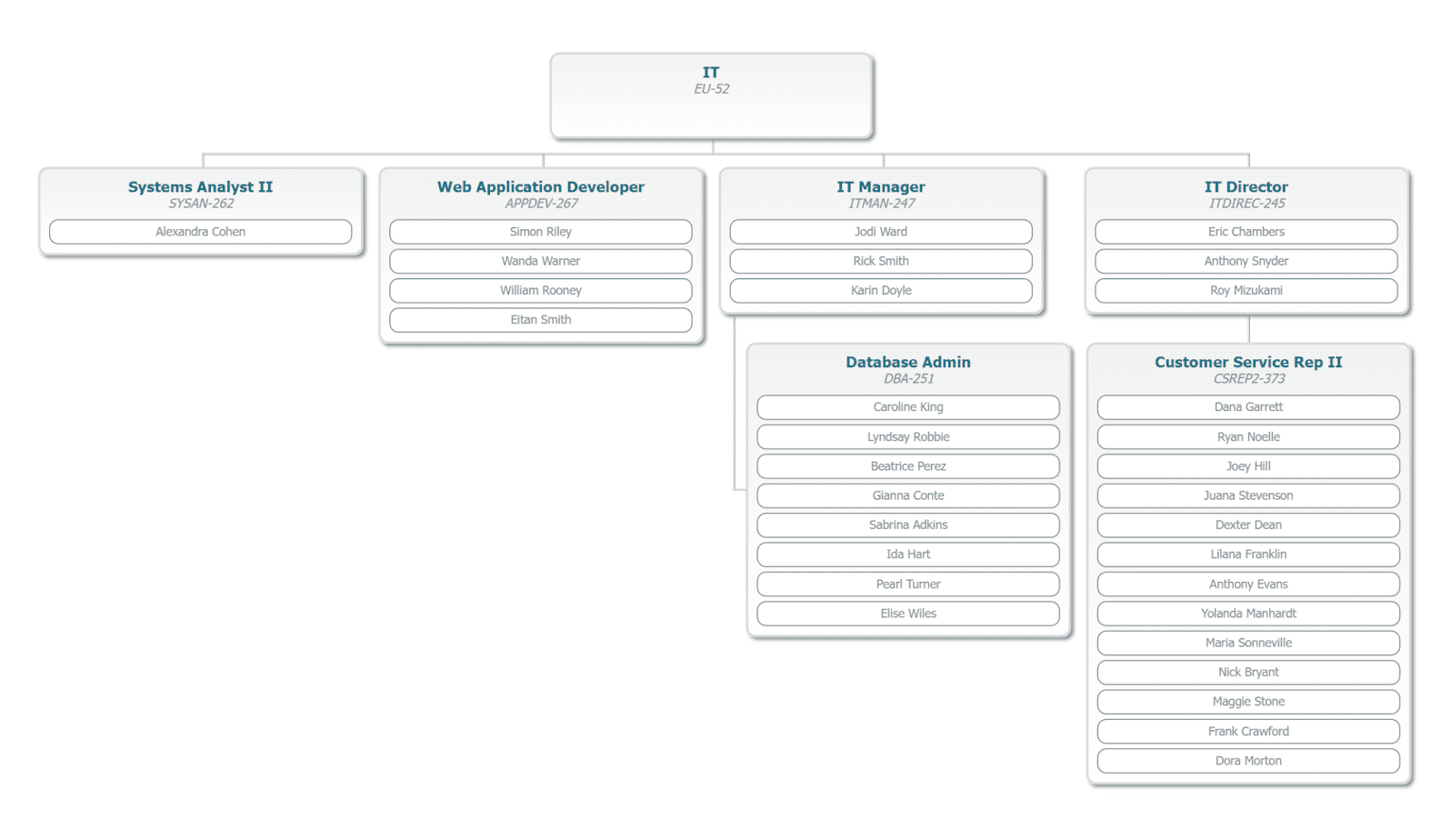April 12, 2023
12:03 AM
By OrgChart Team
Even before the pandemic, research conducted by McKinsey & Company found many companies, “are in a nearly permanent state of organizational flux.” Over half of the global executives McKinsey surveyed in 2015 went through an organizational redesign within the past two years; an additional one-quarter of respondents did so three or more years ago.
This is in stark contrast to generations ago when an organizational redesign might have happened once or twice in an individual’s career.
“The modern-day organization is under increasing pressure to adapt quickly to changing markets and disruptive organizational events such as mergers and restructures as well as changes in working habits with digitally engaged, mobile workforces,” said Concentra CEO Rupert Morrison in a 2015 Society of Human Resource Management (SHRM) post. “This means people need to shift their perspective from seeing organizational design as a one-off activity to a continuous process required to hone and improve performance over time.”
Five years later, the pandemic would prove his point. The crisis required organizations to be nimble, a difficult task for many larger organizations because they might not be comfortable using their data due to quality concerns, or they were using the wrong tools altogether.
“Far too many HR and OD practitioners are stuck in an Excel and PowerPoint nightmare,” said Morrison. “No one ever understood an organization through rows on an Excel spreadsheet or creating an org chart report in PowerPoint. New visualization and modeling tools are available on the market and can deliver a step-change in how people manage their organizations. These should be embraced.”
Here, we’ll go over various organizational structures, starting with where we are today, where we may be going tomorrow, and how OrgChart can help you get there — again and again.
When it comes to org chart creation, this is perhaps the most recognizable structure that promotes centralized decision-making. The functional org chart divides the organization into departments, by specialty (for example, HR, sales, marketing, customer service, accounting, etc.). Employees are grouped together based on the similarity of the activities they perform, and report up to their applicable department heads, who in turn report to upper management or the CEO.
Even though a functional org chart gives employees a clear set of tasks specific to their roles and skill sets, a potential downside is that it can lead to communication silos, where there is a lack of communication between departments.

Another common org structure, the hierarchical model, takes the form of a pyramid, in which you have a clearly laid-out hierarchy between management levels. Similar to the functional org chart, the chain of command goes from top to bottom. However, in the hierarchical model, there is typically a staff director that sits between the CEO and department heads. This director supervises all departments and reports to the CEO.
Slow decision-making is the main consequence of this model. Communication can also be inefficient, especially when certain information needs to travel from top management all the way down to employees.
This is a very rigid structure with a strict set of guidelines. While the hierarchical org chart provides a clear career path for employees, it is a very rigid structure that doesn’t promote autonomy in decision-making.

In this model, the org chart is divided by geographic location. Each location has a dedicated regional manager who is responsible for the inner workings of his or her team. Regional managers report directly to the central headquarters.
This organizational structure makes sense for international companies that need an efficient way of managing their resources. Decentralized in its nature, a geographical org structure gives each location an opportunity to approach customers in a culturally significant, localized way. For example, an international company won’t use the same marketing campaign in the U.S. and in India.

Traditional organizational charts utilize an employee-to-employee reporting structure. More and more, however, HR departments are pivoting toward a position-to-position reporting structure. This model separates the employee from the role that they play at the company, instead showing the relationship between positions and their current and future holders.
Why? In short, employee data and position data, while linked, are inherently different. Employee data (such as name, skills, and experience) are unique to each person. At any time, an employee can leave the organization, or move to another position within the organization. Position data (such as a title, department, and salary range), however, are unique to each position — and, unlike employees, positions are relatively static.

There are several benefits to moving to a positional organizational chart. It allows HR to plan organizational structure before making personnel decisions, ensuring that everyone understand what is needed at each level prior to hiring. By planning the structure and head count first, organizations also mitigate the risk of unconscious/conscious biases during the planning process. Finally, this type of structure enables organizations to plan to cost by using positional salary data rather than individual employee data. For example, positions come with salary bands that may be influenced by experience and/or location.
The matrix org chart has been popular over the past decade, as it nourishes collaboration and open communication. Common among startups, it is also used at organizations transitioning from the hierarchical model.
In companies with this type of org structure, employees are grouped both by function and by project, with essentially two managers: one is the functional manager (oversees daily tasks), while the other is the project manager (oversees the specific project).
While the benefits of this structure are numerous, it can become unwieldy. Complex matrix structures can cause confusion in roles and responsibilities, and slow down the decision-making process.
In a flat organizational structure, there are fewer, if any, levels of middle management. In short, the large layer between employees and the C-Suite is eliminated in this decentralized model.
This model can take any shape or form since there is an equal distribution of decision-making power. The absence of middle management leads to improved efficiency and faster implementation. However, issues similar to those with the matrix — confusion in roles and responsibilities, plus difficulties with scalability — can make this model difficult for large and growing organizations.
The helix organizational model, developed by McKinsey & Company, is one of the latest organizational structures designed to help companies become more agile and adaptable in the face of rapidly changing markets and technology.
The model is based on the spiral-shaped helix. According to McKinsey, “the secret of the helix lies in disaggregating the traditional management hierarchy into two separate, parallel lines of accountability — roughly equal in power and authority, but fundamentally different … one line develops people and capabilities, sets standards for how work is done, and drives functional excellence; the other focuses those people and capabilities on the priorities for the business (including overseeing their day-to-day work), creates value, and helps deliver a full and satisfying customer experience.”
The goal: minimize complexity by, “freeing senior engineers, designers, salespeople, and other functional experts from the burden of serving as day-to-day supervisors” while also empowering employees who no longer have multiple bosses with competing or conflicting interests.
No matter what model you’re using today, or where you’ll be tomorrow, OrgChart enables:
✔ Easy visualization of your entire organization
✔ A clear understanding of your workforce needs
✔ Cross-team collaboration, planning, and sharing
OrgChart provides seamless integration with your existing HRIS tools, and our dedicated support team can guide you through integration and org chart creation.
Tags: